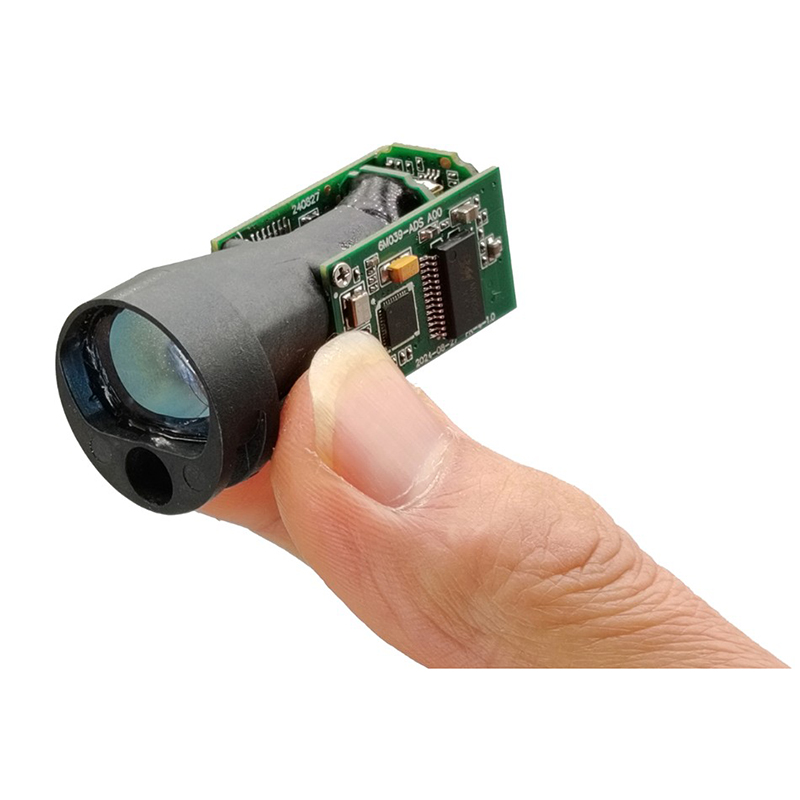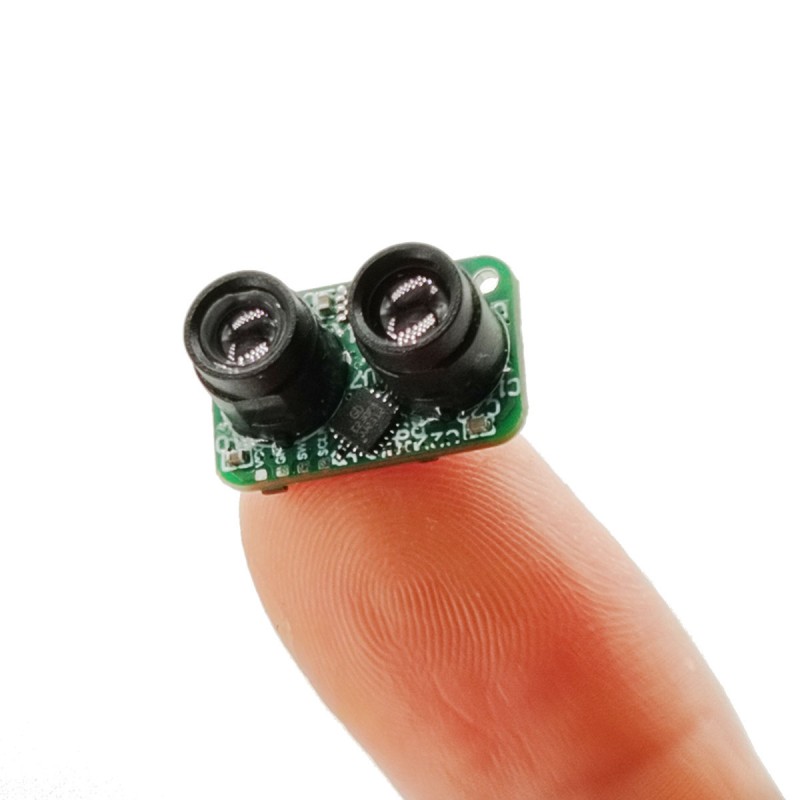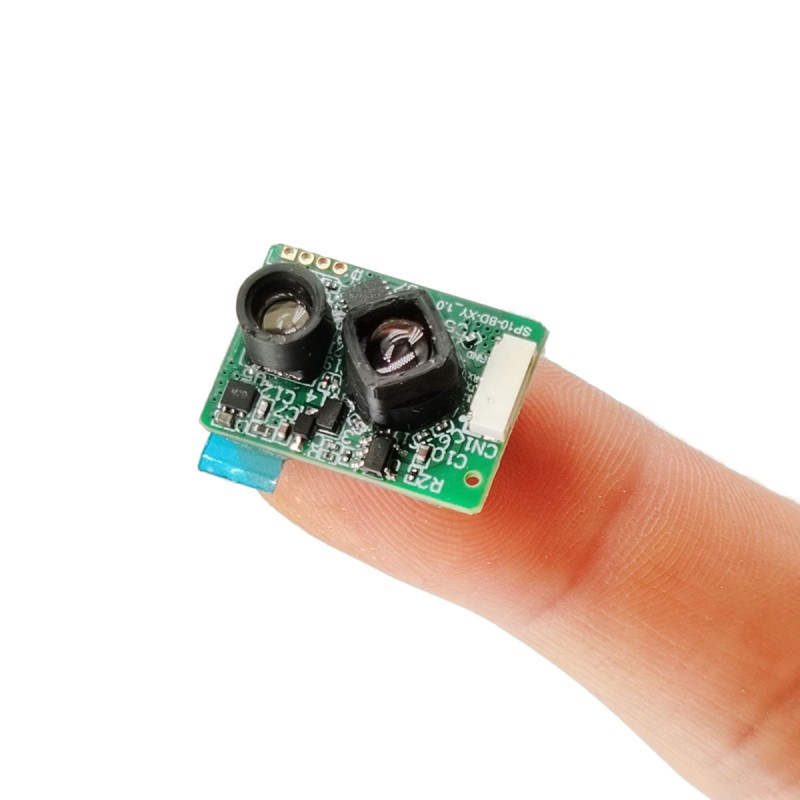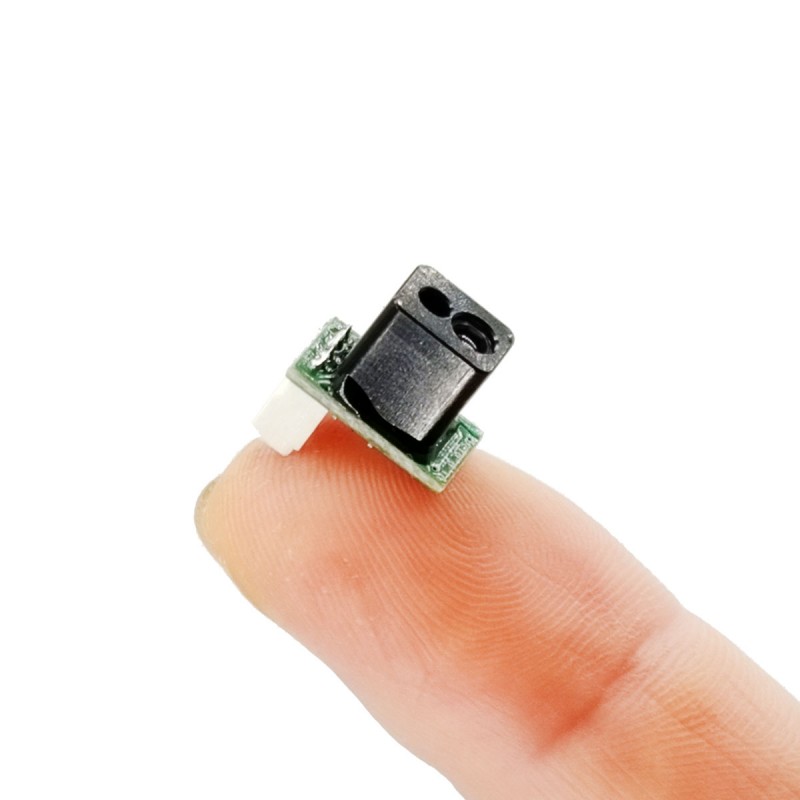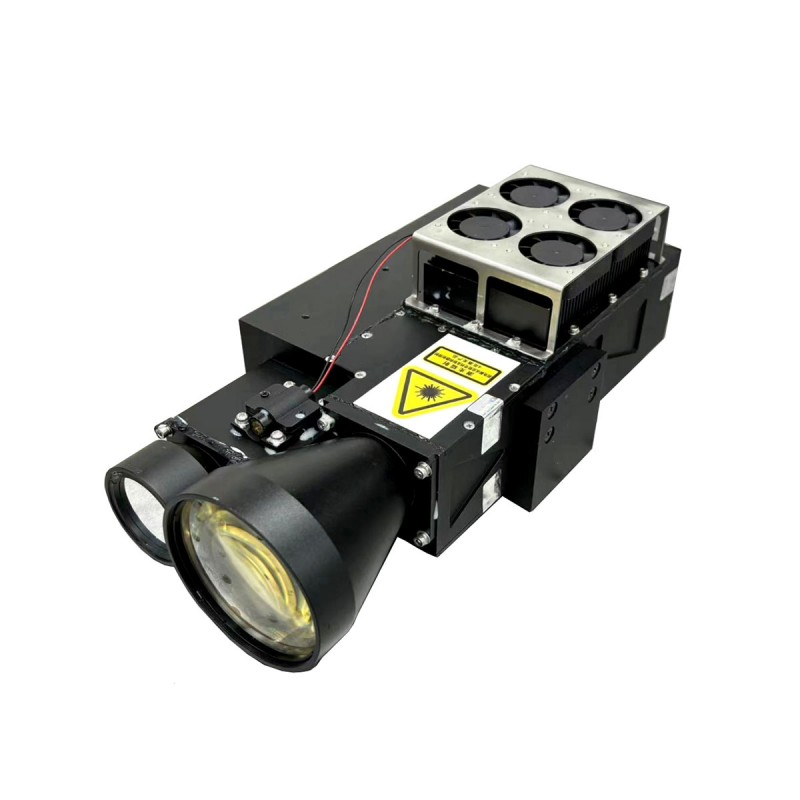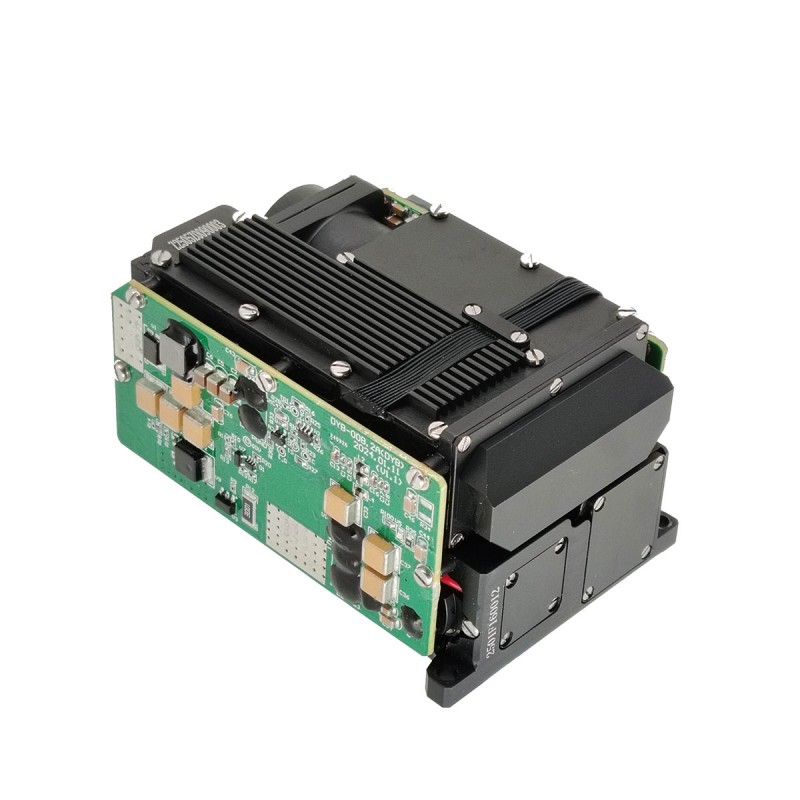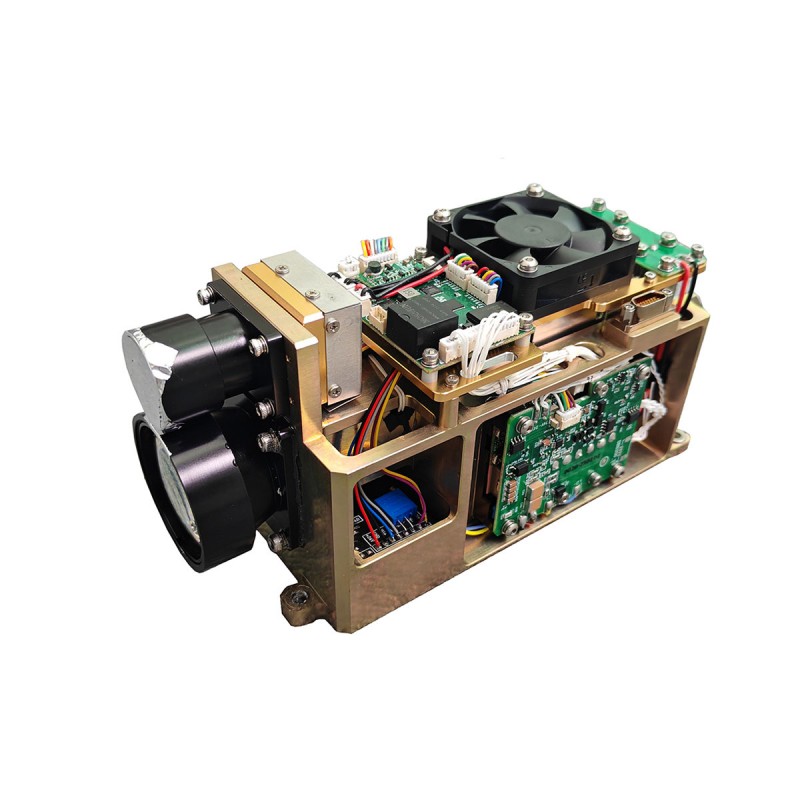Home
>
Products > Laser Rangefinder Module > 1064nm Laser Target Designator > 200mJ Laser Target Designator(LTD) wiht LRF
200mJ Laser Target Designator(LTD) wiht LRF
STA-Z200M is a military 200mj laser target designator that plays a crucial role in precision aiming systems, capable of providing precise guidance for smart ammunition. Through an advanced optical system, it marks the target with a laser beam, ensuring that precision-guided weapons can destroy the target with extremely high accuracy and efficiency.
Send Inquiry
Product Description
This model of laser target designator adopts the integrated design, the system consists of a laser light source and driver, a distance measurement module, an observation system, and a control module.
Main function
Laser ranging function;
Laser irradiation function;
photoelectric isolation signal trigger;
disassembled aiming beam;
external trigger function;
Laser irradiation function;
photoelectric isolation signal trigger;
disassembled aiming beam;
external trigger function;
Main technical indicators
| Working wavelength | 1064nm±1nm | |
| Laser irradiation energy | 200mj | |
| Light delay | 304µs±1µs | |
| Laser beam dispersion Angle | ≤0.2mrad | |
| Irradiation frequency | 8 ~ 21Hz | |
| Ranging frequency | 10Hz | |
| Laser pulse width | 10ns ~15ns | |
| Power stability | ≤±8% | |
| Ranging range | 0.3m ~ 30km (target size 10 m *10 m *8 m, visibility 30km) | |
| Ranging error | less than or equal to 5 meters | |
| Target selection | first/second/end | |
| Accurate measurement rate | 98% | |
| Start-up time | <1min(at normal temperature) | |
| Working time | Ranging mode | continuously working for 5min, rest for 4min, continuous 5 cycles(at low/normal temperature)continuously working for 5min, rest for 4min, continuous 2cycles(at high temperature and 85mj output)continuously working for 2 min, rest for 4min, continuous 2cycles(at high temperature and 160mj output) |
| Irradiation mode | irradiation time 90s, rest 60s, continuous 5 cycles (at low/normal temperature and 85mj output)irradiation time 60s, rest 60s, continuous 5 cycles (at low/normal temperature and 160mj output)irradiation time 90s, rest 60s, continuous1 cycles (at high temperature and 85mj output)irradiation time 60s, rest 60s, continuous 1 cycles (at high temperature and 160mj output) | |
| Full set weight | ≤ 3.3kg | |
Volume of full set
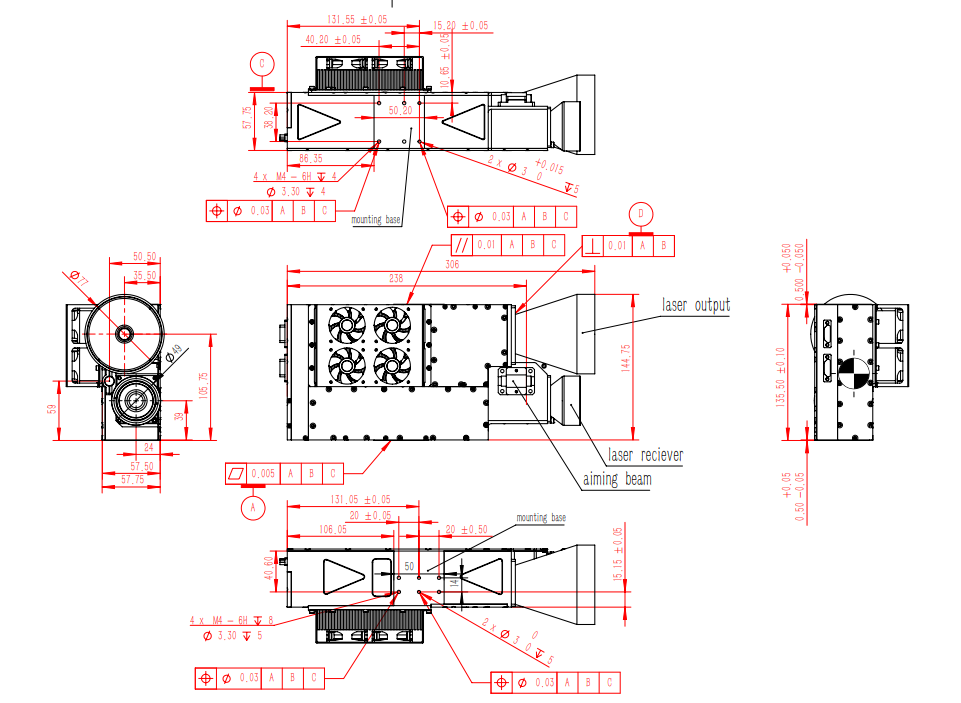
Electrical interface
Communication connector (socket model J30J-15ZKP, butt plug model J30J-15TJ) Pin definition
| Pin | Definition | Content | Type of signal | Remarks |
| 1 | TX+ | RS422 Send positive (local) | Output | Object host computer |
| 2 | TX - | RS422 Send negative (local) | Output | Object host computer |
| 3 | RX+ | RS422 Receive positive (local) | Input | Object upper computer |
| 4 | RX - | RS422 Receive negative (local) | Input | Object upper computer |
| 5 | GND | Ground RS422 | Signal ground | Object upper computer |
| 6 |
|
|
|
Manufacturer's debug special |
| 7 |
|
|
|
Manufacturer's debug special |
| 8 |
|
|
|
Manufacturer's debug special |
| 9 |
|
|
|
Manufacturer's debug special |
| 10 |
|
|
|
Manufacturer's debug special |
| 11 |
|
|
|
Manufacturer's debug special |
| 12 |
|
|
|
Manufacturer's debug special |
| 13 |
|
|
|
Manufacturer's debug special |
| 14 |
|
External time system + | Input | RS422 differential |
| 15 |
|
External time system - | Input | RS422 differential |
Power connector (plug type J30J02P020P000S0P120, plug type J30J02P020S000S0L000) Pin definition
| Pin Number | Definition | Remarks |
| A, B | 24V | The wire color is red |
| C, D | GND | The wire color is black |
Key performance indicators
| Power supply and power consumption | Power supply range | 20V ~ 33V, DC |
| Power consumption | peak power is not more than 260W, standby power is not more than 60W (normal temperature) | |
| Reliability | MTBF is not less than 4000h (total firing time is larger than 3 millions) | |
| Security | Set up a warning device for the laser to work | |
| The exit of the laser transmitter is provided with obvious warning signs | ||
| The equipment is well grounded | ||
| Maintainability | All major functional components and equipment have both fault indicators and indicators for normal operation | |
| The average repair time MTTR is not more than 20min | ||
| Electromagnetic compatibility requirements | In the system boot-up process, the equipment can be compatible with other equipment in the system and operate normally | |
Environmental adaptability requirements
| Temperature | Operating temperature | -40℃ ~ +60℃ | ||||
| Storage temperature | -40℃ ~ +70℃ | |||||
| Humid heat | Relative humidity | 95% ± 3% | ||||
| Temperature | +25°C±2°C | |||||
| Storage time | 72h | |||||
| Vibration | Vibration spectrum shape (grms=6.06) | 20Hz to 80Hz | +3dB/oct | |||
| 80Hz to 350Hz | G2/0.04 Hz | |||||
| 350Hz to 2000Hz | -3dB/oct | |||||
| Vibration direction and time | vibrate in two direction for at least 10min | |||||
| Control point | should be selected in the fixture or shaking table surface near the maximum stiffness of the product, large equipment can use multi-point average control | |||||
| Monitoring point | the monitoring point should be selected in the key part of the product under test, so that the root mean square acceleration response does not exceed the maximum allowable design (grms=6.06) | |||||
| Installation requirements | The specimen is firmly attached to the shaking table, and for products equipped with shock absorbers, the shock absorbers should be removed before testing | |||||
| Performance check | During vibration testing with the equipment powered on, all performance indicators must meet the technical requirements specified in the design document. In the event of a failure, repairs are allowed. After the repair, the spectral value should be reduced to 0.01g²/Hz, grms=3.03, and the specimen should be subjected to vibration in the direction most susceptible to vibration for 10 minutes during the acceptance test. | |||||
| Temperature cycle | Temperature range | Power-on test | -35±3℃ ~ +52±2℃ | |||
| Rate of temperature change | Temperature rise | 10℃/min | ||||
| Cooling | 10℃/min | |||||
| Cycle times | Ten cycles should be completed, ensuring that the last 2 cycles are without faults. If a fault occurs during the last 2 cycles, after repairs, an additional 2 fault-free cycles are required. | |||||
| Cycle time | One cycle time is 4h, one cycle includes temperature rise → temperature stay → cooling → temperature stay → temperature rise | |||||
| High and low temperature residence time | the residence time depends on the heat capacity of the specimen. Based on the principle of product thermal or cold permeability, the internal temperature of the specimen is maintained for 5min after reaching stability | |||||
| The requirements of the product under test | general temperature cycle test with the whole machine, should be as far as possible to open the cover | |||||
| Check and repair | In the power test equipment, after each temperature cycle test, it is necessary to confirm that the equipment is free of faults before proceeding to the next temperature cycle | |||||
| Drenching requirements | Drenching is carried out with the whole equipment | |||||
| transportation requirements | Equipment needs to be transported as a whole vehicle | |||||
| If the product has not undergone a road transport test, you can perform an indoor transport simulation test using a simulation transport table. This test involves conducting a sinusoidal cyclic vibration test to assess the product's performance | ||||||
| The requirements of the simulated transport table test are as follows | ||||||
| Test conditions | Frequency | 5Hz ~ 200Hz | ||||
| Amplitude | 5Hz ~ 7Hz | |||||
| Amplitude 12mm ~ 8mm | ||||||
| 7Hz ~ 200Hz equal acceleration 1.5g | ||||||
| Vibration test condition allowable deviation is the same as broadband random vibration test | ||||||
| Direction | vertical axle direction and side;Orientation: vertical and lateral to the axle | |||||
| Cycle time | log-scan 5Hz ~ 200Hz ~ 5Hz, 12min per cycle;When the resonant frequency of the specimen is measured below 5Hz, the test frequency can be extended to 2Hz, 2Hz ~ 200Hz ~ 2Hz scanning, scanning time should be 15min.The vibration time in each direction is 90min | |||||
| After the transportation test, check for any signs of damage or structural loosening, and conduct an inspection of technical indices to ensure they meet the design requirements | ||||||
Hot Tags: 200mJ Laser Target Designator(LTD) wiht LRF, Manufacturers, Suppliers, Factory, China, Made in China, Customized, High Quality
Related Category
905nm Laser Range Finder Module
1535nm Laser Range Finder Module
1570nm Laser Range Finder Module
1.54um Laser Rangefinder Module
1064nm Laser Target Designator
Anti drone ststem module
Ranging Lidar Module
Send Inquiry
Please feel free to give your inquiry in the form below. We will reply you in 24 hours.

